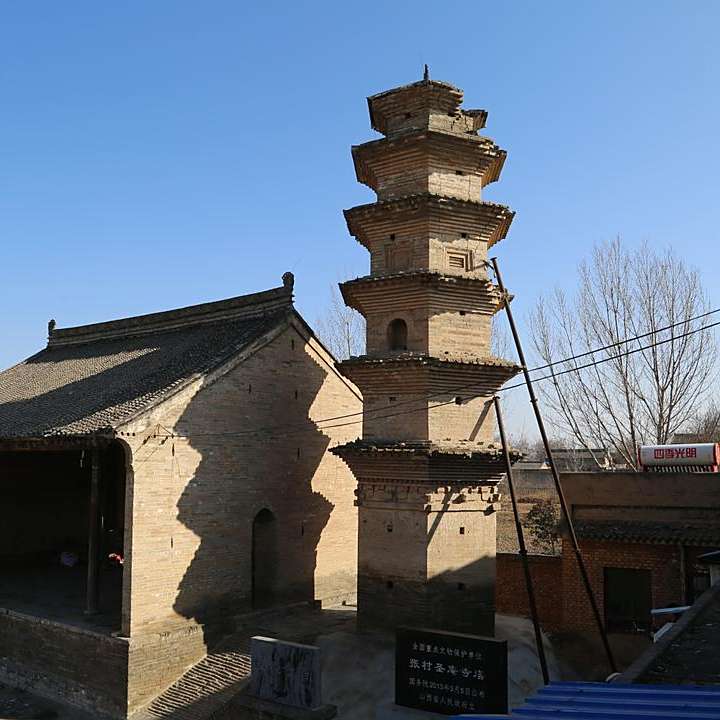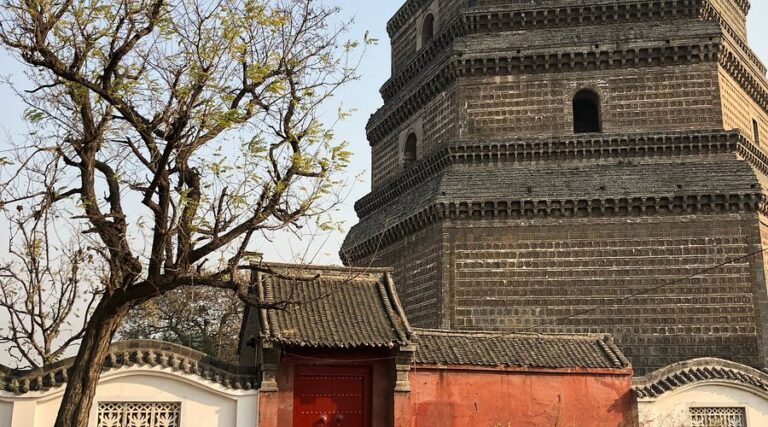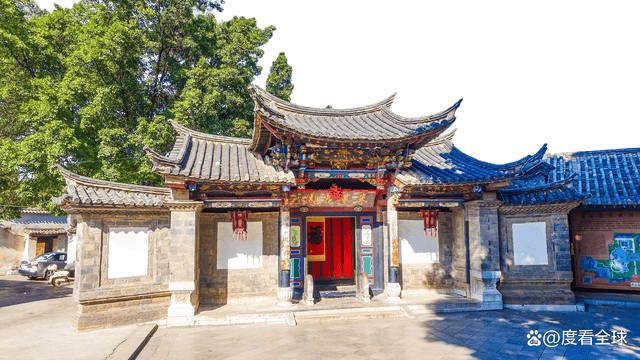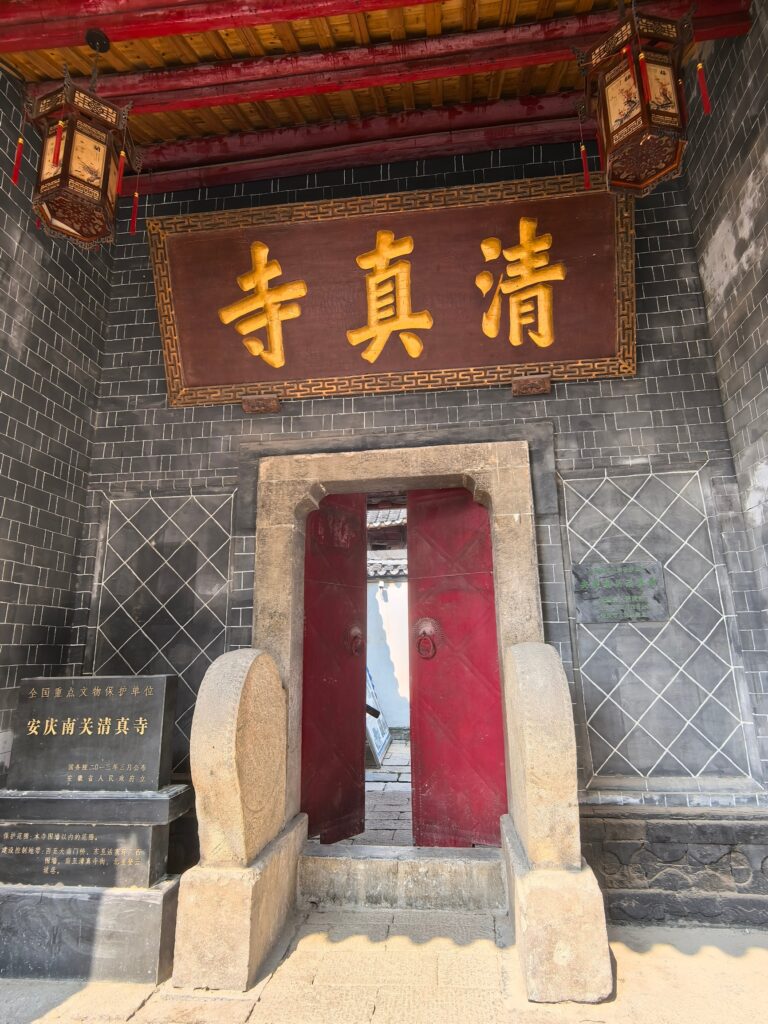Laibin Motusi Yashu: Top Attractions and Activities for an Unforgettable Guangxi Adventure
An Essential Guide to Visiting Laibin Motusi Yashu
In This Guide
- An Essential Guide to Visiting Laibin Motusi Yashu
- The Rich History of Laibin Motusi Yashu
- Main Highlights: What to See at Laibin Motusi Yashu
- Planning Your Visit: A Practical Guide
- Tickets, Hours, and Booking
- How to Get There
- Local Cuisine and Accommodation
- Frequently Asked Questions
- Final Thoughts on Your Trip
Nestled in the picturesque landscape of Guangxi, Laibin Motusi Yashu (莫土司衙署) stands as a testament to China’s rich cultural history and architectural heritage. Often referred to as the “Imperial Court of the Indigenous Leaders,” this historic site is not only one of the most well-preserved examples of Tusi architecture in Asia but also a gateway into the fascinating world of the Zhuang ethnic culture. With its roots tracing back to the Ming Dynasty, the complex has served as the administrative center for the Tusi, or tribal chieftains, for over four centuries, witnessing the ebb and flow of history through the ages.
Visitors to Motusi Yashu are welcomed by an intricate array of traditional structures adorned with exquisite wood and stone carvings, capturing the artistry and craftsmanship of the era. From the ornate meeting halls to the tranquil courtyards, every corner of this site tells a story of power, tradition, and community. The ambiance is steeped in the echoes of the past, inviting exploration and reflection upon the lives of those who once governed these lands.
In addition to its architectural significance, Motusi Yashu offers an immersive experience into the Zhuang culture. Guests can don traditional attire for a memorable photo opportunity, savor local delicacies, and even witness vibrant cultural performances that celebrate the traditions of the Zhuang people. Whether you are a history enthusiast, a culture seeker, or simply a traveler in search of unique experiences, Laibin Motusi Yashu promises an unforgettable journey into the heart of Guangxi’s cultural tapestry.
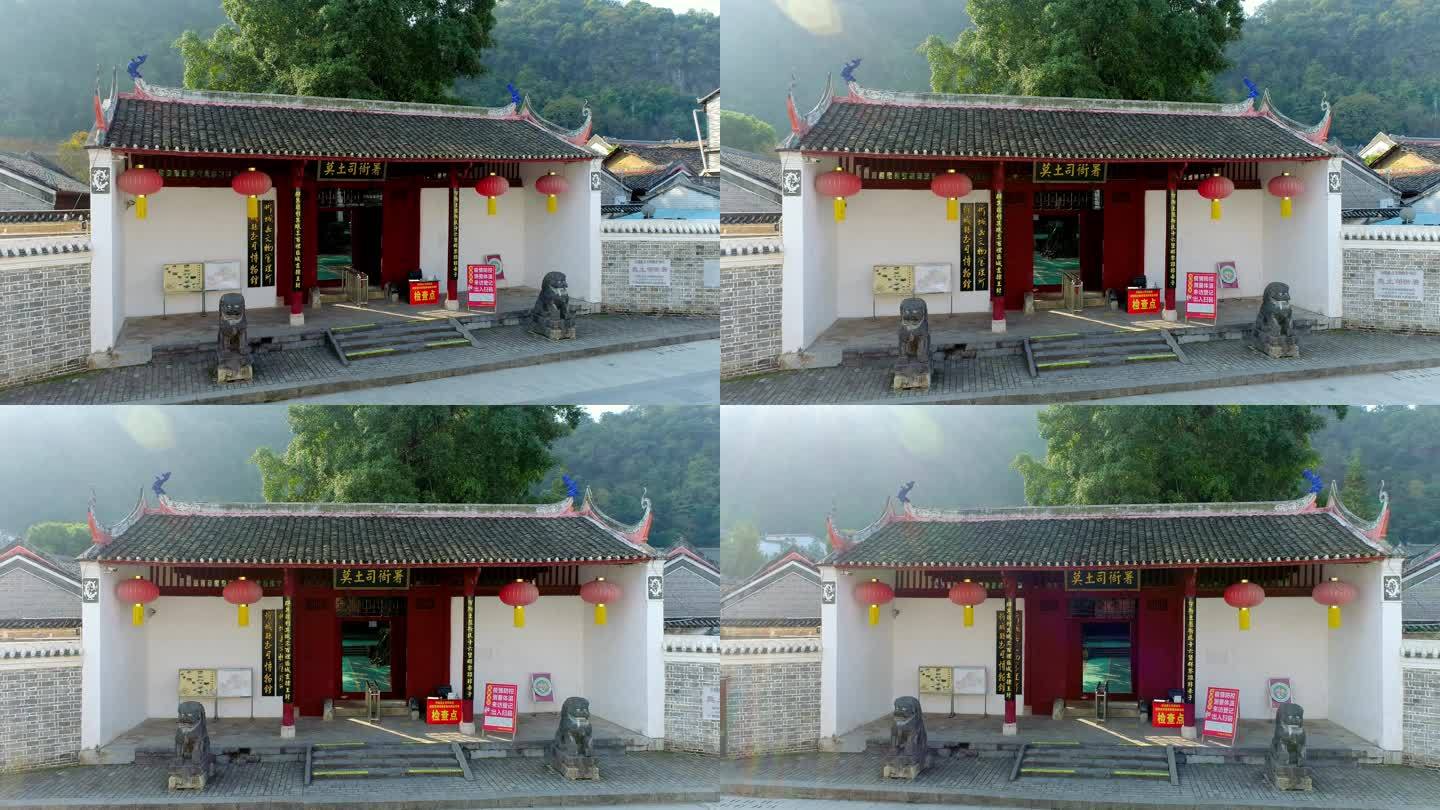
Laibin Motusi Yashu.
The Rich History of Laibin Motusi Yashu
Laibin Motusi Yashu, also known as the Mo Tusi Yamen, is a significant historical site located in the Xin Cheng District of Laibin City, Guangxi Zhuang Autonomous Region, China. This architectural complex serves as a remarkable testament to the rich cultural heritage of the Zhuang ethnic group and the historical governance of the Tusi system, which was prevalent in the region for centuries.
The Mo Tusi Yamen dates back to the Ming Dynasty and has been preserved remarkably well through the ages. It served as the administrative office for the local Tusi, or tribal chieftain, overseeing the management of the region and its people. The Tusi system, established during the Yuan Dynasty, allowed for a degree of autonomy for local ethnic leaders while still recognizing the overarching authority of the central government. This arrangement was crucial for maintaining stability in the diverse ethnic landscape of Guangxi.
Over the course of 453 years, the Mo Tusi Yamen was home to 24 generations of Tusi, each contributing to the cultural and political fabric of the area. The architectural style of the Yamen reflects traditional Chinese aesthetics, characterized by intricate wood and stone carvings, as well as mud sculptures that showcase the artistic skills of the local craftsmen. Notably, the buildings are arranged harmoniously in a manner that is both functional and visually appealing, set against the backdrop of the lush mountains that define the area.
The complex includes several key structures, such as the North Building, Lingxu Platform, and the Imperial Tablet Pavilion, each imbued with historical significance. The artifacts housed within the Yamen, including various weapons and daily utensils, offer visitors a glimpse into the life and governance of the Tusi, illustrating the intricacies of their society.
Today, the Mo Tusi Yamen is recognized as a national key cultural relic protection unit and a AAA-rated tourist attraction. It not only preserves the architectural heritage of the Tusi but also serves as a cultural museum, showcasing the agricultural, folk, and Confucian cultures of the region. Visitors can engage with the history of the Tusi system through guided tours and cultural performances, making it an enriching experience for anyone interested in Chinese history and the diverse cultures of its ethnic minorities.

Laibin Motusi Yashu.
The site stands as a reminder of the historical governance structures that shaped this part of China and continues to be a focal point for education and cultural preservation, drawing visitors from around the world who seek to understand the legacy of the Zhuang people and their connection to the broader tapestry of Chinese history.
Main Highlights: What to See at Laibin Motusi Yashu
Laibin Motusi Yashu, also known as the Motusi Office, is a captivating historical site located in the heart of Guangxi Province, China. This well-preserved architectural complex is a testament to the rich cultural heritage of the Zhuang people and serves as a window into the traditional governance of the region. Here are the main highlights you won’t want to miss during your visit:
-
Architectural Significance: The Motusi Yashu is recognized as one of the most intact examples of Tusi architecture in Asia. Dating back to the Ming Dynasty, the complex features exquisite wooden carvings, stone sculptures, and clay reliefs that showcase the artistic skills of the time. Walking through its halls feels like stepping back into a bygone era, surrounded by an atmosphere of historical grandeur.
-
Cultural Experience: Engage deeply with the Zhuang culture by donning traditional attire available for rent. Capture stunning photographs against the backdrop of the impressive architecture, adding a personal touch to your travel memories. Additionally, you can experience ethnic performances that highlight the vibrant traditions and folklore of the local communities.
-
Historical Insights: The site served as a governmental office for over 450 years, managing various affairs of the Zhuang people. The museum within the complex hosts a rich collection of artifacts, including over 300 items related to daily life and warfare, revealing the dynamics of life in a Tusi system. Guided tours provide enriching narratives that bring these historical contexts to life.
-
Scenic Surroundings: Nestled amid picturesque landscapes, the Motusi Yashu is accentuated by its natural setting. The site is flanked by rolling hills and lush greenery, making it a perfect spot for leisurely walks and photography. The overall ambiance is serene, offering a peaceful retreat from the hustle and bustle of modern life.
-
Local Cuisine: After exploring the historical and cultural treasures, indulge in the local cuisine. Nearby eateries offer a variety of traditional dishes, including “Youcha,” a unique tea-based drink, as well as local specialties that reflect the flavors of the Zhuang culture. Sampling these dishes adds another layer to your experience, allowing you to savor the essence of the region.
-
Visitor Information: The Motusi Yashu is open from 9 AM to 5 PM, with the last entry at 4:30 PM. To make the most of your visit, consider arriving early to avoid crowds and fully immerse yourself in the tranquil environment. The site is accessible by public transport, and parking is available for those driving.

Laibin Motusi Yashu.
In summary, a visit to Laibin Motusi Yashu offers a unique blend of history, culture, and natural beauty. Whether you are an architecture enthusiast, a history buff, or simply looking to experience the local culture, this remarkable site is sure to leave a lasting impression.
Planning Your Visit: A Practical Guide
Practical Guide to Visiting Laibin Motusi Yashu (莫土司衙署)
Laibin Motusi Yashu, located in the Guangxi Zhuang Autonomous Region of China, is a remarkable historical site that offers a glimpse into the rich culture and architectural heritage of the Zhuang people. This guide will help you plan your visit to this fascinating site effectively.
Getting There
- Location: Motusi Yashu is situated in the town of Datang, within Xincheng County, Laibin City.
- Transportation:
- By Train: The nearest major city is Liuzhou, from where you can take a bus or taxi to Xincheng County, which typically takes about two hours.
- By Car: If driving, the journey from Nanning takes approximately 3.5 hours via the Quannan Expressway. Parking is available near the entrance.
- Public Transport: Local buses run from Laibin to Xincheng, providing a budget-friendly option for travelers.
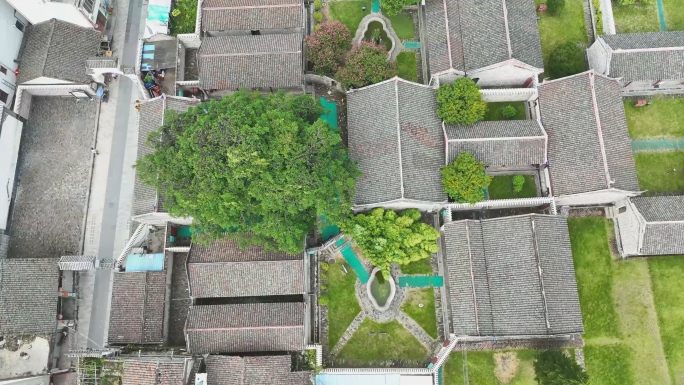
Laibin Motusi Yashu.
Opening Hours
- Hours: The site is open from 9:00 AM to 5:00 PM, with the last entry at 4:30 PM. It is advisable to arrive early to avoid crowds, especially on weekends and holidays.
Admission Fees
- Ticket Price: Entrance to the Motusi Yashu is generally around 80 RMB. Purchasing tickets online in advance may offer discounts.
- Guided Tours: Consider joining a guided tour for a richer experience, as knowledgeable guides can provide in-depth information about the history and significance of the site.
What to See
- Historical Architecture: The Motusi Yashu complex boasts well-preserved structures dating back to the Ming and Qing dynasties. Key highlights include intricately carved wooden and stone sculptures, ancient administrative buildings, and the iconic Lingxutai, which offers panoramic views of the surrounding landscape.
- Cultural Performances: Don’t miss the opportunity to watch traditional Zhuang cultural performances at the site, which often include dance and music, showcasing the vibrant local culture.
- Exhibitions: Inside the museum, you can explore various artifacts, including traditional weapons and daily life tools from the Zhuang culture, providing insight into the region’s historical context.
Local Cuisine
While visiting the Motusi Yashu, indulge in local delicacies:
- Oil Tea: A refreshing drink made from tea leaves, often served hot or cold, perfect for a warm day.
- Zhuang BBQ: Try the various grilled meats available at local stalls; they are flavorful and a must-try.
- Sticky Rice Dishes: Enjoy traditional Zhuang sticky rice cakes, which are often filled with sweet or savory ingredients.

Laibin Motusi Yashu.
Where to Stay
Accommodations near Motusi Yashu provide options for various budgets:
- Motusi Cultural Hotel: Located close to the site, this hotel offers comfortable rooms and amenities, making it convenient for visitors.
- Local Guesthouses: For a more authentic experience, consider staying in a guesthouse run by local families, allowing you to immerse yourself in Zhuang culture.
Tips for Your Visit
- Best Time to Visit: The ideal months are from May to October when the weather is pleasant, and the surrounding nature is lush and vibrant.
- Dress Appropriately: Wear comfortable shoes and clothing suitable for walking, as the site spans a considerable area.
- Respect Local Customs: When taking photographs, especially of performances or local people, be sure to ask for permission.
- Plan Your Route: Given the size of the complex, it’s helpful to have a map or plan your route in advance to ensure you see all the important sites.
Safety and Etiquette
- Preservation: Be mindful of the historical artifacts and structures. Avoid touching or climbing on them to preserve their integrity.
- Health Precautions: Stay hydrated, especially during warmer months, and follow any health guidelines in place during your visit.
By following this practical guide, you can enhance your experience at Laibin Motusi Yashu, ensuring a memorable and enriching journey into the heart of Zhuang culture and history.
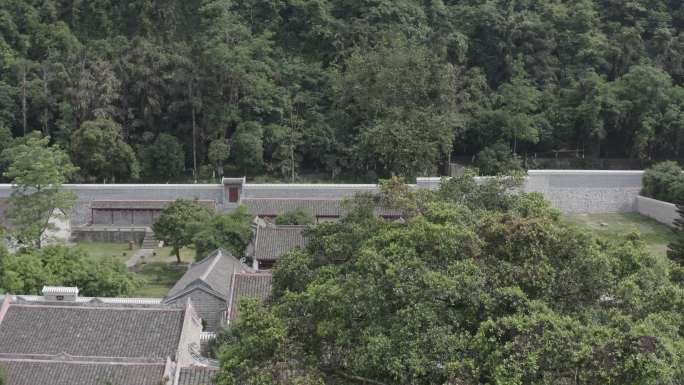
Laibin Motusi Yashu.
Tickets, Hours, and Booking
When planning your visit to Laibin Motusi Yashu (莫土司衙署), it’s essential to have the latest ticket information to ensure a smooth experience.
Ticket Prices
- General Admission: 80 RMB per person. For those looking to save a little, purchasing tickets online can offer a discount of 10 RMB.
- Cultural Performances: The ticket price includes access to on-site performances, which feature traditional ethnic music and dances. However, it’s advisable to arrive early to secure front-row seats for the best views.
- Yao Bath Experience: If you’re interested in a unique cultural immersion, Yao baths are available for an additional 98 RMB per person. Guests staying at nearby accommodations can enjoy a discounted rate of 20% for this experience.
Opening Hours
The site is open from 9:00 AM to 5:00 PM, with the last entry at 4:30 PM. To avoid the crowds, it’s best to visit early in the day.
Additional Tips
- Dress Appropriately: The site is largely outdoors, so comfortable walking shoes and weather-appropriate clothing are recommended.
- Cultural Attire Rental: For an immersive experience, visitors can rent traditional Zhuang attire for a nominal fee of 30 RMB per hour, perfect for capturing memorable photos at the historic site.
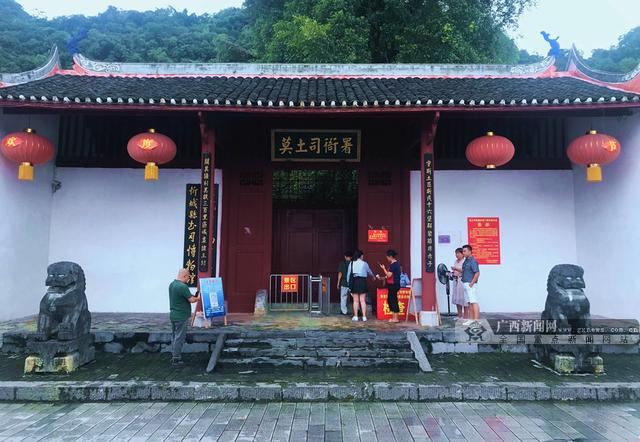
Laibin Motusi Yashu.
Getting There
Laibin Motusi Yashu is located in Xincheng County, easily accessible by public transportation or car. It’s advisable to allocate sufficient travel time to arrive at the venue without rush.
Make the most of your visit by considering these ticket details and planning ahead!
How to Get There
When planning your visit to Laibin Motusi Yashu (莫土司衙署), navigating the transportation options is essential for a smooth and enjoyable experience. The site is located in Xincheng County, Guangxi Province, and is accessible through several modes of transport.
Getting There
By Train
The nearest major train station is in Liuzhou. From Liuzhou, you can take a high-speed train to Xincheng, which offers a comfortable and quick travel option. Once you arrive at Xincheng Station, continue your journey by taking a local bus or a taxi to the Motusi Yashu, which is approximately 30 kilometers away.
By Bus
If you prefer bus travel, regular services run from major cities such as Liuzhou and Guilin directly to Xincheng County. The bus journey can take about 1.5 to 2 hours depending on traffic. Upon reaching Xincheng, local buses or taxis are available for the final leg of your trip to the Motusi Yashu.
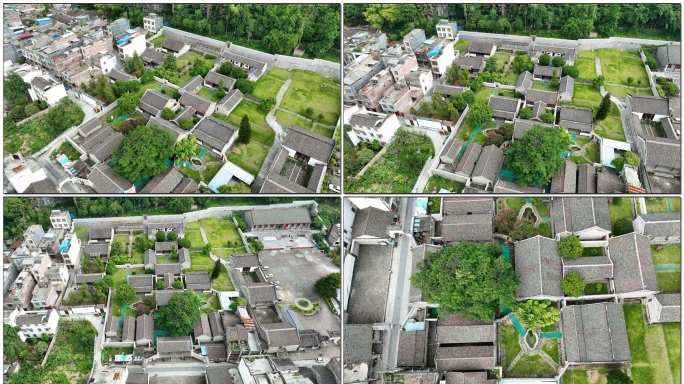
Laibin Motusi Yashu.
By Car
For those who enjoy the flexibility of driving, renting a car is an excellent option. The journey from Nanning to Motusi Yashu takes approximately 3.5 hours via the Quannan Expressway. The route is scenic, offering glimpses of the picturesque Guangxi countryside. There are parking facilities available near the site.
Local Transportation
Once you arrive at Motusi Yashu, local transportation options include taxis and electric bicycles, which can be rented for exploring the surrounding area. This allows you to visit nearby attractions and enjoy the local culture at your own pace.
Tips for Travelers
- Plan Ahead: Public transport schedules may vary, especially during holidays. It’s advisable to check the latest schedules online or through local travel apps.
- Language: While signs and announcements in transportation hubs may be in Chinese, having a translation app can help you navigate easily.
- Cash: Ensure you have some local currency on hand, as not all transportation services may accept digital payments.
- Peak Times: If traveling during weekends or holidays, consider booking your transportation in advance to avoid long wait times.

Laibin Motusi Yashu.
By understanding the transportation options available, you can enhance your visit to Laibin Motusi Yashu and immerse yourself in the rich cultural heritage it offers.
Local Cuisine and Accommodation
When visiting Laibin Motusi Yashu (莫土司衙署), you can expect to experience a delightful blend of local cuisine and comfortable accommodations that capture the essence of the region’s rich cultural heritage.
Culinary Delights
Laibin offers a myriad of traditional dishes that reflect the unique flavors of the Zhuang culture. Here are some must-try local delicacies:
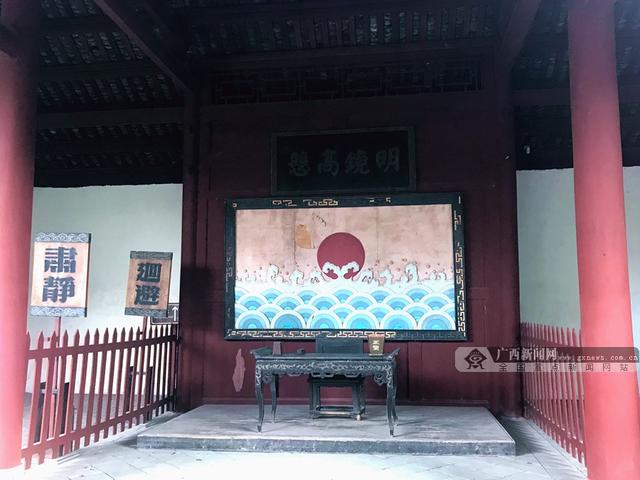
Laibin Motusi Yashu.
-
Oil Tea (油茶): This is a popular beverage in the region, available hot or cold. Its rich, savory flavor makes it a refreshing choice, especially after a day of exploring.
-
Grilled Fish: Head to one of the bustling barbecue stalls in Xin Cheng, where you can savor freshly grilled fish, a favorite among locals and visitors alike.
-
Pig Blood Sausage: A traditional Zhuang snack, this dish is known for its chewy texture and savory taste. Be sure to try this when you’re in the area.
-
Corn Cakes (玉米粑粑): Made from fresh corn, these sweet and soft cakes are a delightful treat that locals enjoy.
-
Sticky Rice Treats (马打滚): A unique dish made from glutinous rice, often served with various fillings. This is a staple in Zhuang cuisine and is both filling and delicious.
-
Bean Curd Meat Pies (豆巴精肉饼): Found near the Motusi Yashu, these savory pies are a snack you won’t want to miss.
Accommodation Options
For a comfortable stay near Laibin Motusi Yashu, consider the following hotels, which offer a mix of convenience, comfort, and local charm:
-
Motusi Cultural Hotel (莫土司文化大酒店): This boutique hotel is located adjacent to the Motusi Yashu and provides a blend of modern amenities and cultural aesthetics. Guests can enjoy comfortable rooms and easy access to the historical site.
-
Xin Cheng Grand Hotel (忻城大酒店): A three-star establishment situated in the town center, this hotel offers spacious rooms, excellent service, and is just a short drive from the Motusi Yashu. It’s ideal for travelers looking for a comfortable and convenient base.
-
Local Homestays: For a more immersive experience, consider staying at one of the local homestays. These accommodations often provide a glimpse into Zhuang culture, along with home-cooked meals that showcase local ingredients and cooking techniques.
Tips for Your Stay
- Plan Ahead: Given the popularity of Laibin Motusi Yashu, especially during peak tourist seasons, it’s wise to book your accommodations in advance.
- Explore Local Markets: While dining out is a great option, don’t miss the chance to explore local markets where you can find fresh ingredients and unique snacks to try.

Laibin Motusi Yashu.
Whether you’re sampling the rich flavors of Zhuang cuisine or relaxing in welcoming accommodations, your visit to Laibin Motusi Yashu promises to be a memorable experience steeped in culture and tradition.
Frequently Asked Questions
-
What is Laibin Motusi Yashu (莫土司衙署)?
Laibin Motusi Yashu, also known as the Mo Tusi Office, is a historic site located in Xincheng County, Guangxi, China. It is recognized as one of the most well-preserved Tusi architectural complexes in Asia, showcasing a rich cultural heritage that spans over 450 years. -
What are the opening hours for Laibin Motusi Yashu?
The site is open from 9:00 AM to 5:00 PM daily, with the last entry permitted at 4:30 PM. It’s advisable to arrive early to avoid crowds and fully explore the complex. -
Is there an entry fee for Laibin Motusi Yashu?
Yes, there is an entry fee. It is recommended to check the official website or local information sources for the latest pricing and any available discounts. -
What can visitors expect to see at Laibin Motusi Yashu?
Visitors can explore various ancient structures, including traditional wooden and stone buildings, intricate carvings, and historical artifacts. The site also features exhibitions that delve into the Tusi culture, farming traditions, and local customs. -
Are there guided tours available?
Yes, guided tours are available and highly recommended to enhance your understanding of the historical significance and cultural background of the site. Check at the entrance for tour options and schedules. -
What should I wear when visiting Laibin Motusi Yashu?
Comfortable walking shoes are recommended, as the area involves walking through historical pathways and structures. Additionally, dressing modestly is advisable to respect local customs. -
Are there dining options near Laibin Motusi Yashu?
Yes, there are several local eateries in Xincheng County offering traditional Guangxi dishes. Be sure to try local specialties such as oil tea and bamboo rice while you are in the area. -
How can I get to Laibin Motusi Yashu from nearby cities?
The site can be accessed by car or public transport from major nearby cities like Liuzhou and Nanning. It typically takes about 2 to 3 hours by car, depending on traffic conditions. Local bus services may also be available; check local schedules for specific routes.
Final Thoughts on Your Trip
Visiting Laibin Motusi Yashu is more than just a journey through time; it’s an immersion into the rich tapestry of Zhuang culture and history. This beautifully preserved site stands as a testament to China’s unique ethnic heritage, showcasing remarkable architecture and artifacts that narrate stories of the past. As you stroll through its ancient halls, you can almost hear the echoes of history coming alive around you.
To make the most of your visit, consider engaging with local customs, tasting traditional dishes, and perhaps even donning Zhuang attire for a memorable photograph. The surrounding landscapes also offer breathtaking natural beauty, making it easy to extend your exploration beyond the historical site.

Laibin Motusi Yashu.
Whether you are a culture enthusiast, a history buff, or simply seeking a unique travel experience, Laibin Motusi Yashu promises an enriching adventure. Embrace the opportunity to connect with the vibrant traditions and stories that have shaped this region for centuries, and leave with memories that will linger long after your visit.
